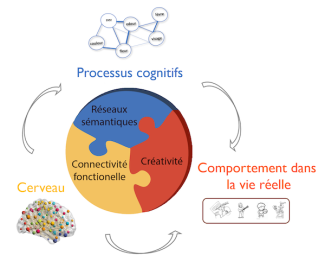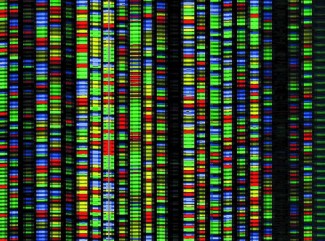The group of Emmanuelle Volle at Paris Brain Institute and their international collaborators established for the first time a link between real-life creativity, semantic memory structure, and brain functional connectivity. The results, published in Science Advances, indicate that real-life creativity relies on individual differences in semantic memory organization that can be predicted from brain functional connectivity.
Creativity is a cognitive function that we use in our everyday life, to solve problems, cope with change, and innovate. In neuroscience, it is usually defined as the ability to produce something new and appropriate to a specific context. In real-life, we apply this capacity in diverse activities, including, for instance, visual art, sciences, music or writing, in which we can reach various levels of achievement.
According to the associative theory of creativity, creative thinking relies, at least in part, on the organization of associations in semantic memory, i.e., on the way elements of our knowledge are connected to each other. “Hence, the organization of connections in semantic memory may determine our ability to link distant concepts in novel ways, and may vary across individuals. Yet, the brain mechanisms underlying the link between semantic memory organization and creativity remained to be explored” explains Marcela Ovando-Tellez, lead author of the study.
Challenge accepted for the group of Emmanuelle Volle at Paris Brain Institute, and their collaborators, Mathias Benedek (University of Graz, Austria) and Yoed Kenett (Technion - Israel Institute of Technology, Israel). The authors used a semantic relatedness judgment task, asking participants to rate the semantic relationships between multiple pairs of words during the fMRI acquisition. Based on these ratings they built individual maps of pairwise semantic associations called semantic networks. The organization of the semantic networks was explored using network-based tools and related to creativity. To assess real-life creativity, participants were asked to fill a questionnaire about their creative activities and achievements in 8 different domains including literature, cooking, music, sport, performing arts, science and engineering.
First, their results show that the organization of semantic memory networks predicted individual real-life creativity. This indicates that participants with higher creative activities and achievements had semantic memory networks that were less segregated and more efficient. Second, the authors explored the brain functional connectivity during the task and identified specific functional connectivity patterns predicting the semantic network organization that fostered creativity, i.e., less segregated networks. Finally, and “closing the loop”, such individual semantic network organization mediated the link between brain connectivity and real-life creativity.
The originality of our study is to link three levels of investigation, behavior in real-life, cognitive processes and the brain, by combining recently developed computational approaches to predict complex cognitive functions from brain connectivity and to explore individual semantic networks
Taken together, these results provide a new understanding of some of the individual neurocognitive mechanisms underlying real-life creative behavior.
Sources
https://pubmed.ncbi.nlm.nih.gov/35119928/
Ovando-Tellez M, Kenett YN, Benedek M, Bernard M, Belo J, Beranger B, Bieth T, Volle E. Sci Adv. 2022 Feb 4







